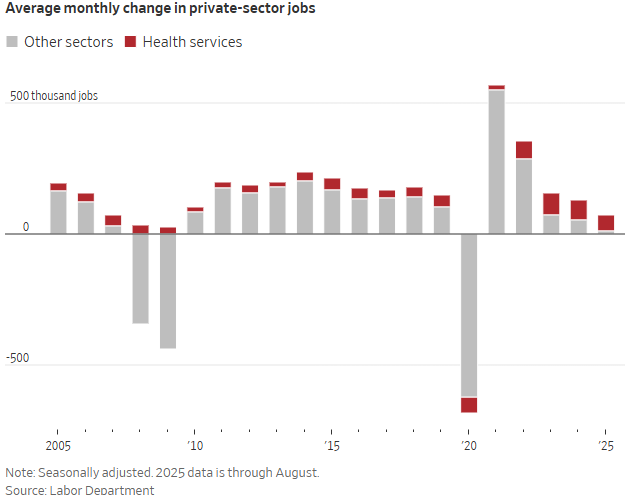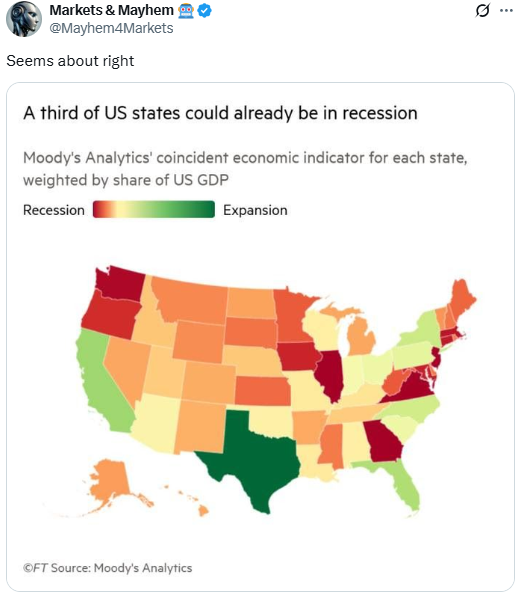Nvidia AI chips targeted in China customs crackdown- FT
The August jobs report clarified what many investors already suspect: the U.S. labor market is stalling. Outside of healthcare and social assistance, private-sector job creation has nearly flatlined this year. So far in 2025, the economy has added an average of 74,000 private-sector jobs per month.
Stripping out the ~64,000 monthly additions from healthcare jobs, the rest of the economy added just 9,400 jobs on average. In other words, without the healthcare jobs, payroll growth would be essentially zero. The chart from the Wall Street Journal below illustrates healthcare’s increasing proportion of total job growth since the COVID-19 pandemic.
Healthcare’s resilience isn’t new. Thanks to aging demographics and steady demand for essential services, it’s sporting a long trend of steady growth. Today, the sector employs 23.5 million Americans, about one in six private-sector workers. However, questions are growing about how much longer it can prop up the broader market.
Upcoming cuts to Medicaid, which could total $911 billion over the next decade, threaten hospitals and nursing homes that rely heavily on government support. At the same time, labor shortages and immigration restrictions may strain the sector’s ability to keep expanding.
The good news is that healthcare jobs are unlikely to shrink outright. With an aging population and persistent demand for health services, growth should remain positive. However, job creation could deteriorate further if the sector slows while other industries remain weak. For markets, that raises the risk that softer employment data starts pressuring earnings estimates—and by extension, today’s lofty equity valuations.
Are Lumber Prices Warning of an Economic Slowdown?
Lumber prices have slumped to year-to-date lows, weighed down by an inventory glut built ahead of tariffs. As the WSJ noted,
“Producers were so confident, they overlooked one glaring obvious hurdle while piling up lumber in the U.S.: demand or lack thereof.”
With warehouses full and construction permits slipping to their lowest levels since 2020, lumber mills are now cutting back production.
The sharp decline in lumber prices raises concerns about a potential slowdown in housing-related activity and the broader economy when paired with August’s weak employment report. Historically, lumber has been a leading indicator for both, reflecting shifts in building demand and consumer sentiment.
Yet the signal isn’t conclusive. Often viewed as the more reliable economic barometer, copper prices remain in a longer-term uptrend. That divergence poses the key question: Are lumber prices flashing a broader economic slowdown? Or are they simply reflecting elevated mortgage rates and uncertainty around trade policy?
With the Fed expected to cut rates later this month, a rebound in construction and lumber demand is possible. However, if lumber prices fail to recover given further rate cuts, it may suggest that deeper cyclical forces are at play.
Tweet of the Day

